Corvette: A Racing Reminiscence
By Dick Thompson
From Car Classics, October 1977
I started out racing Corvettes for I GM in 1956 and ’57, and I got to know Bill Mitchell that way. I remember, two weeks after that first Sebring where the Vettes did so badly— Paul O’Shea and I had a 300SL that year at Sebring—John Fitch called me up and said if I would buy a Corvette, GM wanted to maintain it and use it as a test car. You couldn’t get any factory help in SCCA, so I had to buy the car and campaign it, but Duntov would take it back after every race and tear it apart and give it back to me in time for the next race.
Then I raced Mitchell’s old SR-2, which was just a stock Corvette with a big tail fin on the back. Underneath it was straight Corvette. It was strictly a styling car. It ended up as Jim Jefford’s ‘‘Purple People Eater.’’
The Sting Ray was significantly better than the SR-2—no comparison. It was 800 pounds lighter, it had that space frame from the Sebring SS, it had that DeDion rear suspension which helped a lot. With big tires and good brakes, it would still be a nice car.
It was a very enjoyable car to drive, except that it wouldn’t stop, which took some of the joy out of it. It had good handling, no vices. Of course those were the old days of small tires, and we started out with no limited slip in the differential, so that was a handicap. But the car was light, and we used virtually a production engine. GM was out of racing, and they wouldn’t release anything.
It had only one drawback, and that was brakes. Except for that, it would have been an exceptional car. The car that we raced most often was Augie Pabst in his Scarab, and the Sting Ray would do everything else as well as the Scarab. It just wouldn’t stop!
I suffered without brakes the whole time. And it’s no fun at all to race without brakes. It got pretty hairy at times, and I had a few accidents because of those brakes…nothing serious. [Ed. note: flipping at over 100 mph at Meadowdale and landing upside down…nothing serious!] And once at Laguna Seca, in the last turn, Walt Hansgen passed me, dove in front, then put his brakes on. I had no brakes at all, there was no escape road in those days, there were people all around, I had no place to go. So l hit him.
When I say I had no brakes, I mean none at all. I didn’t even bother putting the pedal down. I usually had brakes for about half the race, then they’d start fading, and the last few laps, I wouldn’t have any. Fortunately, it handled well, so when I ran out of stop, I could slide it sideways and take off a good bit of speed that way. I had to ‘‘dirt track it’? around. I always made sure it had a little bit of oversteer, so I could get the tail end around.
The body developed a good deal of lift; it needed a dam under the front, but nobody had done any work on that. The front end would lift, and it would get very light. But with most of the courses that we were running on, we didn’t get going that fast anyway. It wasn’t like racing in Europe, where we couldn’t have tolerated it. Our top speed with normal gearing was only 150 or so, and you wouldn’t be at 150 for more than a few hundred yards. Just that last third of the way down the straightaway it was a problem.
I’ll tell you, that later car, the Grand Sport that they built in 1963—I drove that at Meadowdale, and it was the first time I’d ever seen or heard of a car actually flying. At Meadowdale, two-thirds of the way down the straight, we had a bump. The nose would go up and the wheels would go two feet off the ground and stay there, for about a hundred feet. Scared the living daylights out of me. The Sting Ray never did that, but it would get light.
Nobody paid much attention to aerodynamics in those days. Just about then was when that type of car was starting to go that fast. I drove a Maserati at Le Mans that did the same thing. I drove a GT-40 Mirage for Gulf Oil, and it would do it too. The Sting Ray was one of the last pre-aerodynamic racing cars.
Our big competition came from Bob Holbert and Roger Penske in their RSK Porsches, the Scarabs, and every once and a while a Birdcage Maserati. There were a few Lister-Jags, but most of them weren’t well campaigned by then…they were on their second or third owners, and not really competitive. When we raced in California, they had a little of everything out there. The last of the Birdcages were around, there were some pretty fast ones on the West Coast.
They weren’t as fast as the Sting Ray, but they would do the rest of the game a little better. They had brakes, primarily. Walt Hansgen had a 2-liter, Gaston Andrey had a 3-liter.
This was strictly amateur racing. Mitchell paid my expenses. I had nothing to do with the car, I just showed up and drove. I did do some testing on it. People always thought there was all kinds of backing to it, but it was always a shoe-lace operation. Mitchell was paying for it out of his own pocket, and I think most of GM would rather he didn’t race it. He got very little cooperation.
Zora wasn’t very keen on it at all. Zora’s idea, and I’m not sure it’s all wrong, was that if anything with that much of a GM label on it was raced, it should be done whole-heartedly or not at all. But Bill said, ‘‘That’s fine, give me support.’’
Dean Bedford was the team manager, Kenny Eschebach was the mechanic and my wife was the timer and scorer. Kenny did the work and Bedford did the thinking. I’d come in after every race with no brakes, and I’d do a lot of screaming. But nobody ever listened to me. We got the same brakes every time, knowing full well they’d never last. Bedford had no authority over anybody. He’d get Bill’s ear once in a while, and Bill would get on the phone, and talk to somebody, and they’d promise something, but it would never show up. Basically, they didn’t care.
We never won a race. The nearest one was a second overall at Elkhart Lake. Something always happened. Kenny was not an experienced race mechanic, and he didn’t have enough help. Dean Bedford was not experienced. We did get a national championship, but that was just from sticking to it, going to enough races. Driving the Sting Ray helped me in getting some rides later on, and it did some harm, too. I’m not sure which it did more. I know I pretty much sat out the 1961 season, the year after the Sting Ray. So it didn’t do much for my career from that point of view.

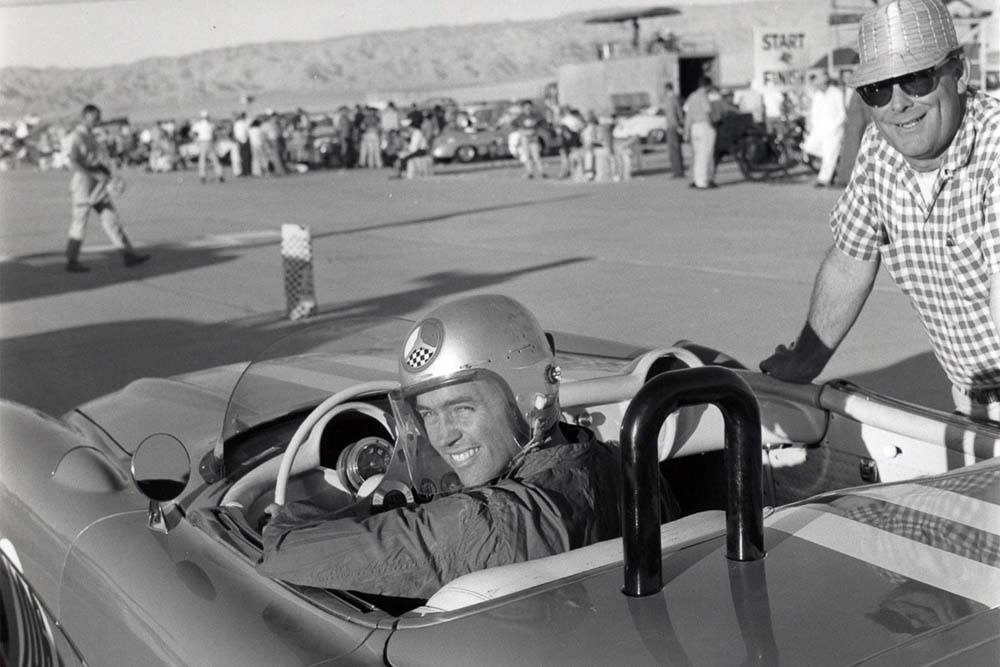
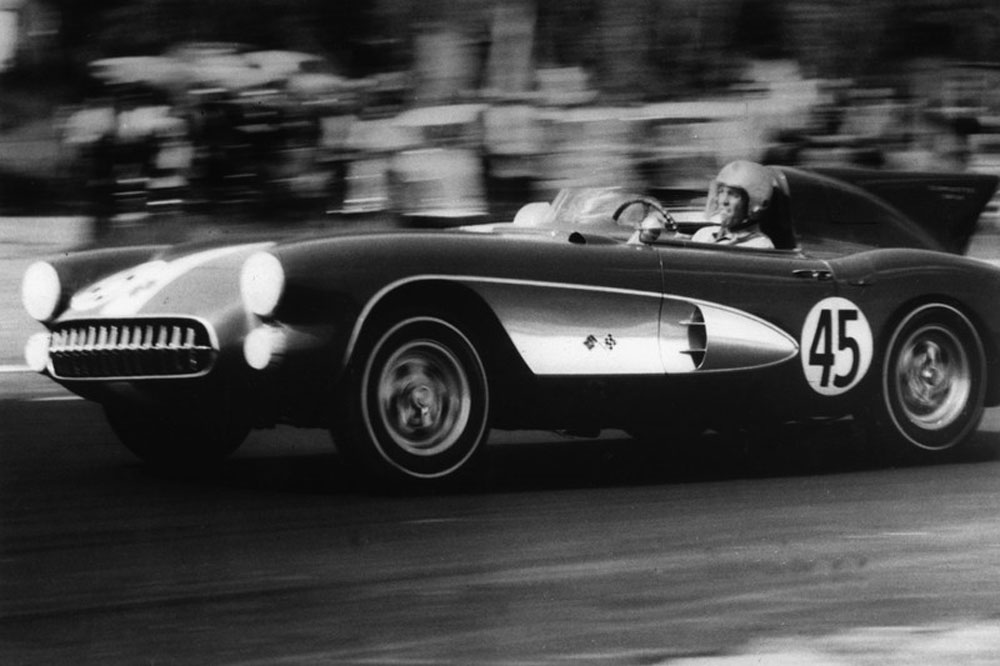
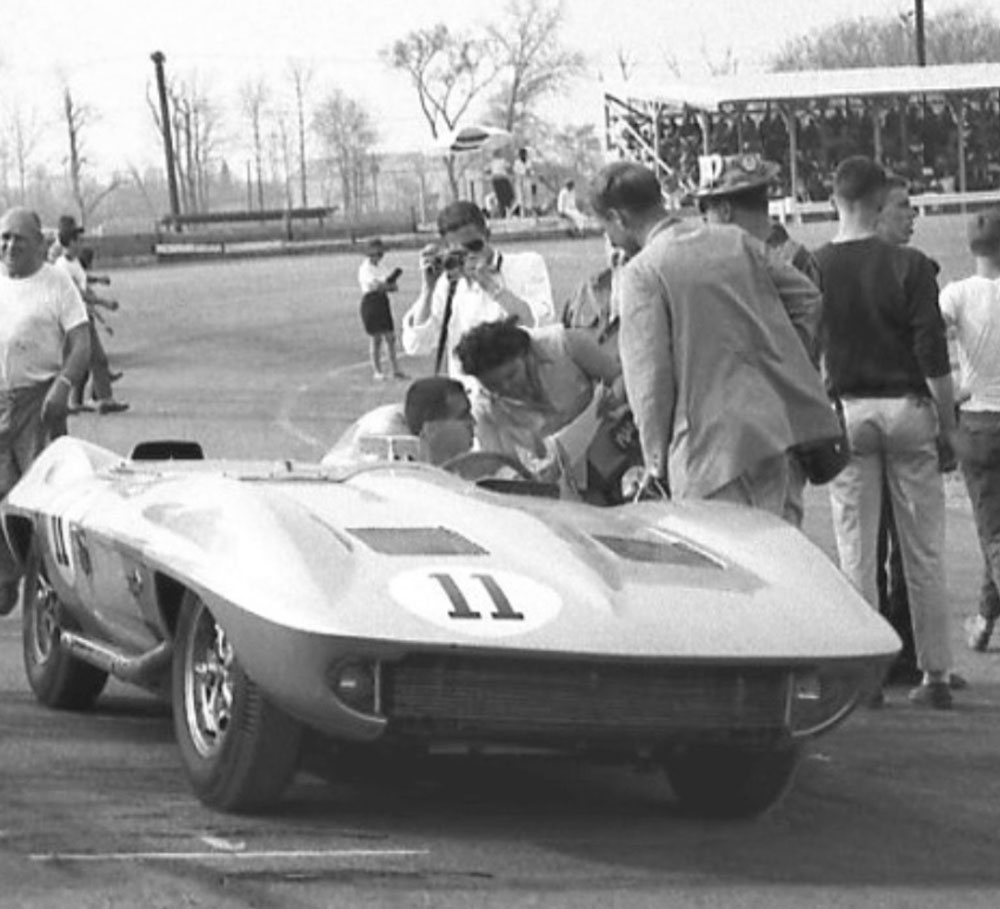
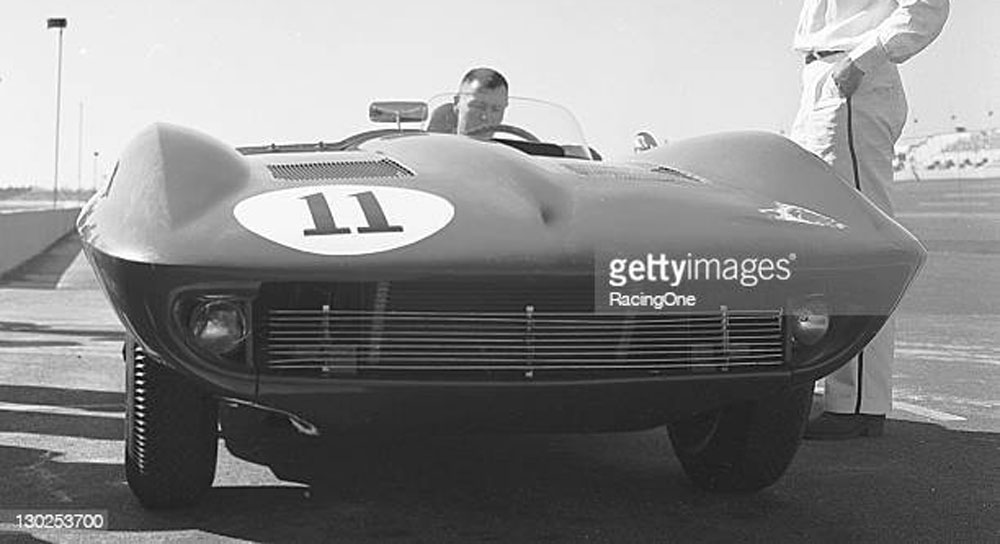
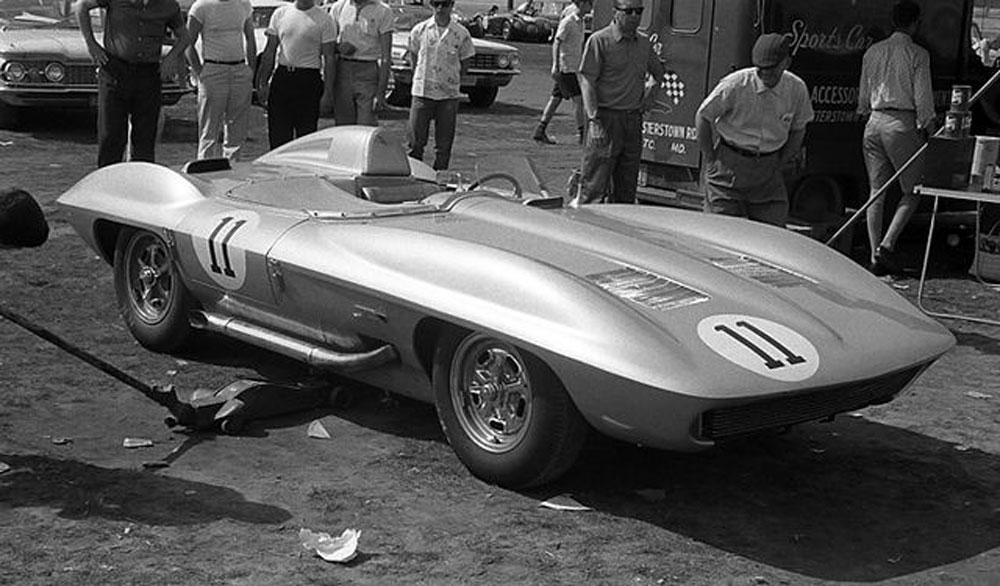
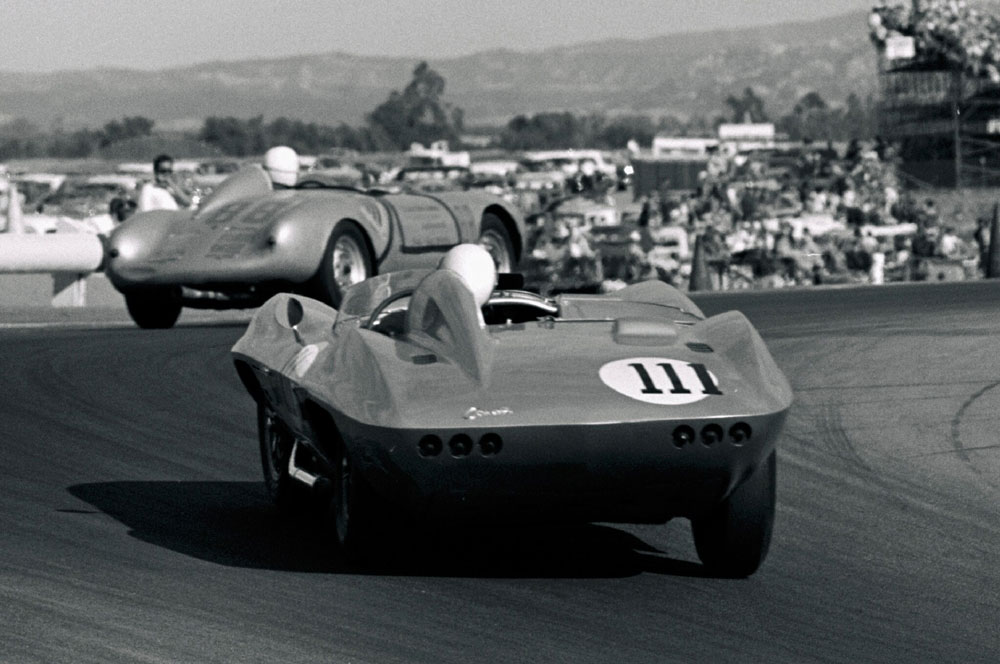
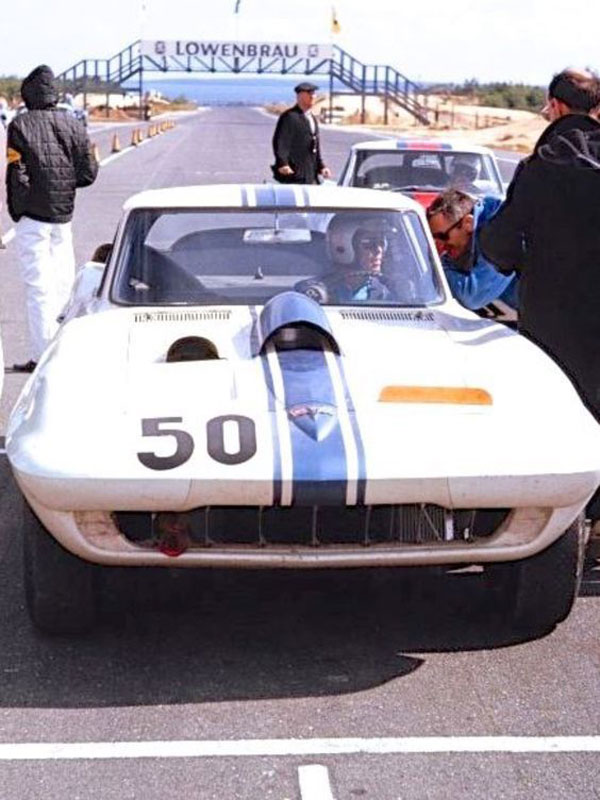
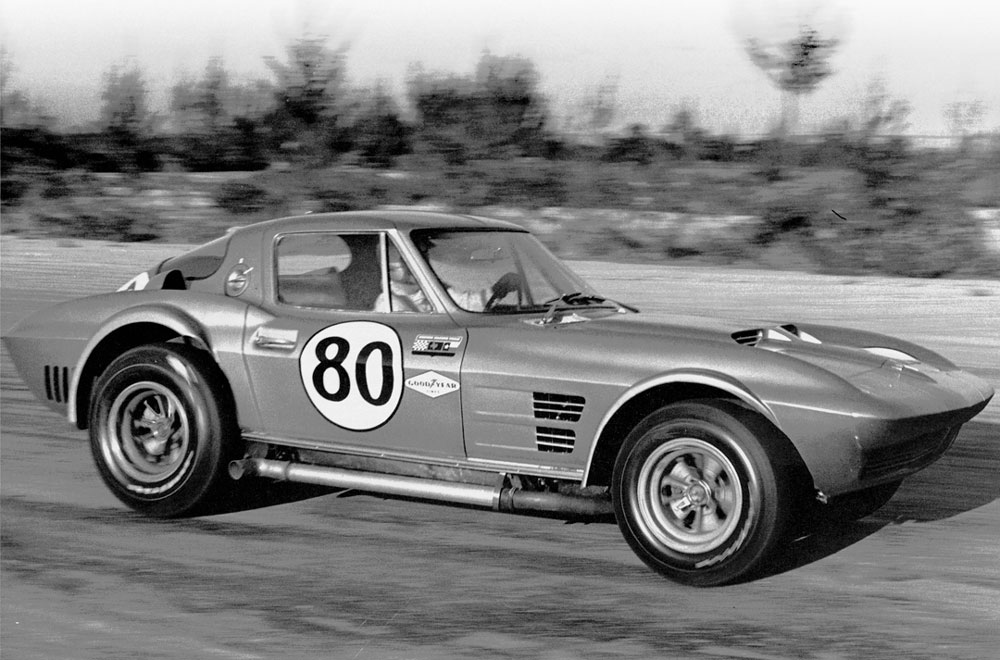
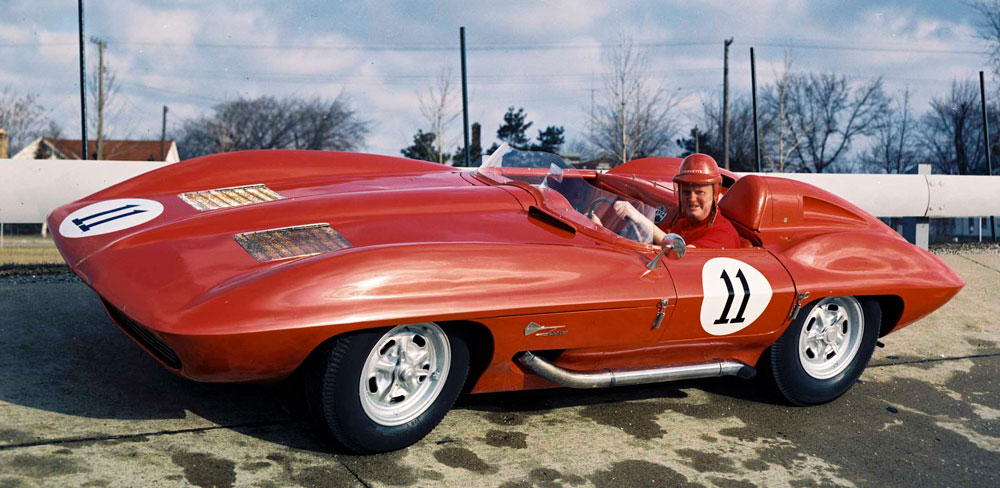
Wondered at the outset what you meant by the 1959 Stngray..then I saw the pictures!
Fun fact: the Scarab had exactly the same front-end-lift problem as the Sting Ray, so much so that when the “continuation” versions were created the constructors advertised that they had a solution to the aerodynamic problem of front end lift. There are also pictures of Augie Pabst driving a period Scarab with an air dam on TOP of the hood, trying to solve the problem!
But more poignantly for me, I was at Bridgehampton the same weekend that the #50 Grand Sport was raced. We didn’t even know what it was; there had been no public announcement of the GS program. And guess what: it had a front-end lift problem on the long straightaway (3300 feet) at Bridgehampton. That’s Ken Miles talking to Dr. Dick – he came to introduce a new race car to Bridgehampton, A Shelby Cobra….